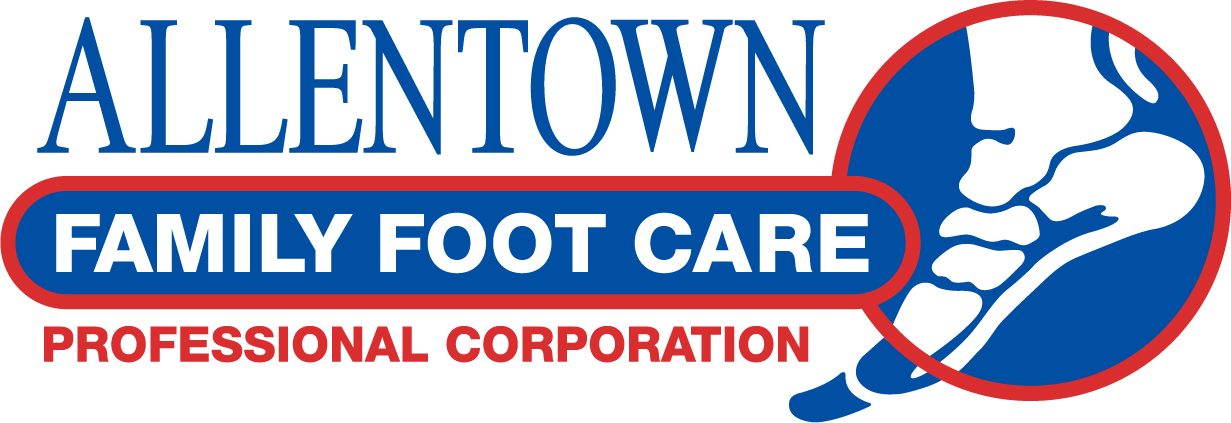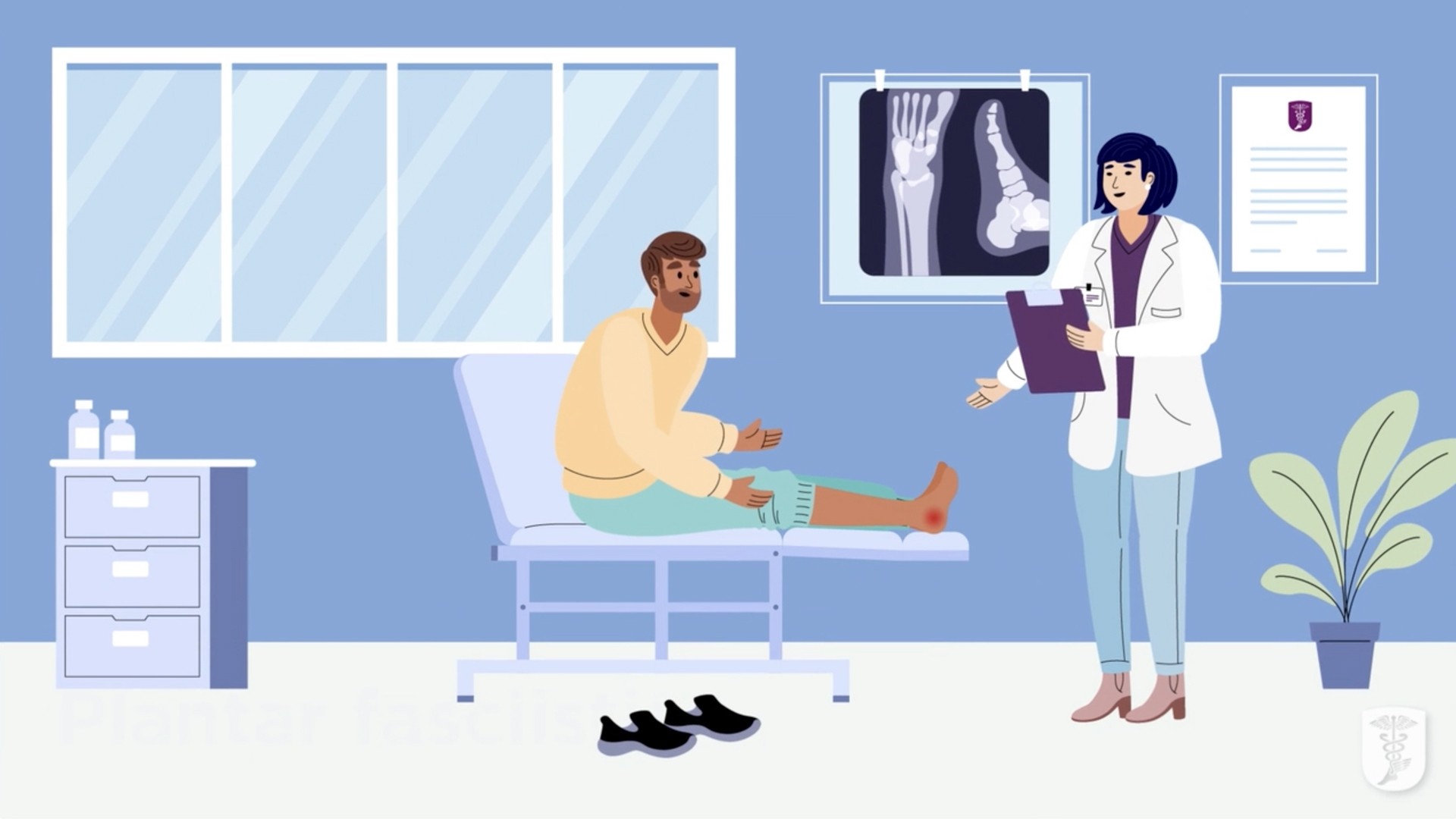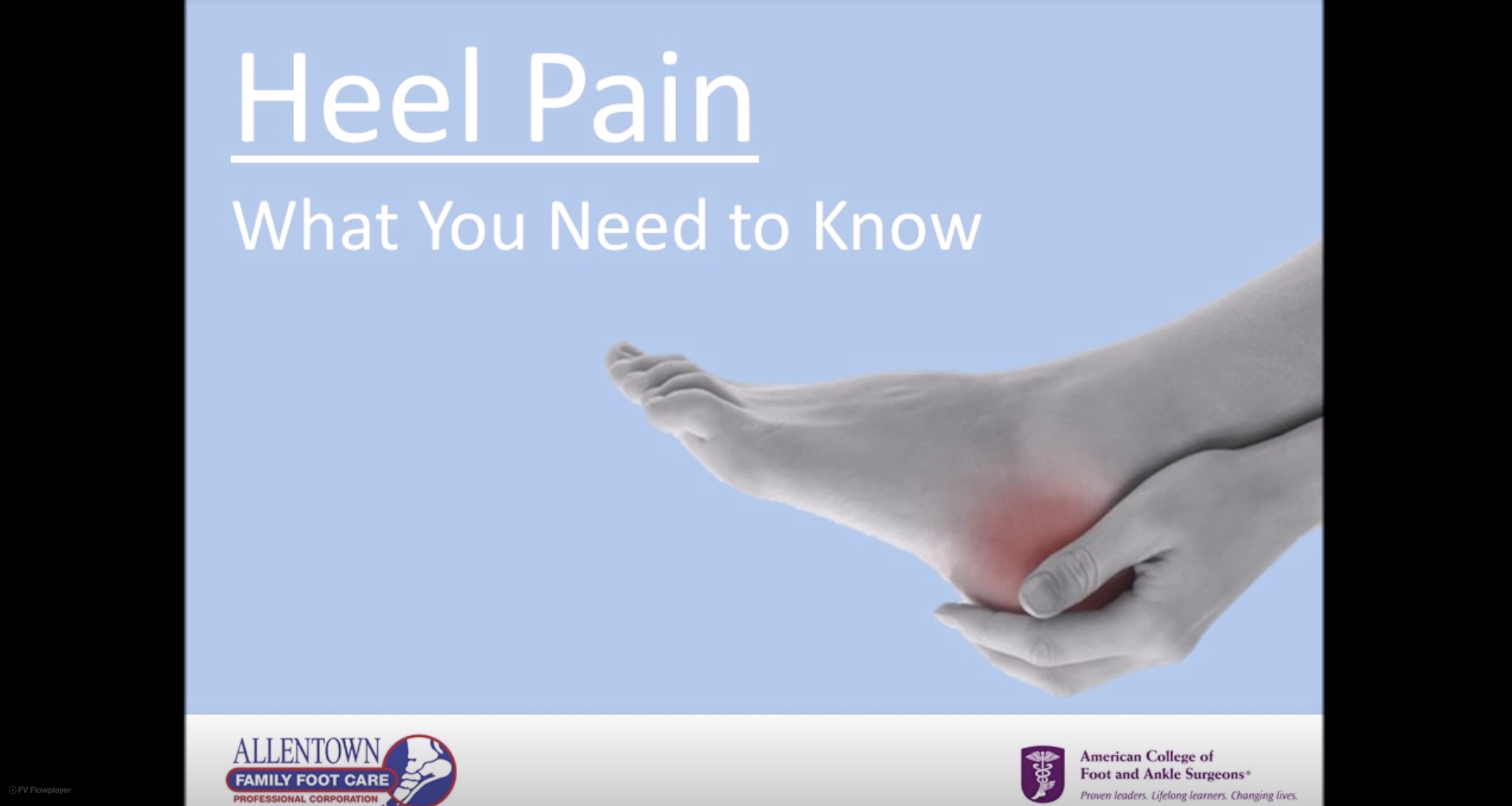Heel Pain
Heel pain is the most common foot problem we treat in the office. You know, pain in the heel with the first steps out of bed in the morning. Pain that sometimes lessens after you are on your feet, but then returns with a vengeance when you stand up again. Heel pain usually occurs with no notable trauma or injury to the foot. It just starts. And, if you are like most people, you think it will go away on its own. However, it is usually not that easy. So be proactive and start to address this problem early on.
If you are not improving within two weeks, call for an appointment. Your foot can then be evaluated in a variety of ways. An x-ray can show bone spurs, etc. or a diagnostic ultrasound can show inflammation of the plantar fascia ligament, which attaches to the heel.
Causes of Heel Pain
Heel pain can be caused by a variety of factors, including:
- Plantar Fasciitis: inflammation of the band of tissue that runs from the heel to the toes
- Heel Spurs: bony growths that can develop on the bottom of the heel bone
- Achilles Tendonitis: inflammation of the Achilles tendon, which connects the calf muscle to the heel bone
- Bursitis: inflammation of the small fluid-filled sacs that cushion the joints
- Stress Fractures: tiny cracks in the bones that can occur from repetitive impact or overuse
Symptoms of Heel Pain
Symptoms of heel pain may include:
- Pain or tenderness in the heel or arch of the foot
- Swelling
- Stiffness
- Difficulty bearing weight on the affected foot
Treatment and Management of Heel Pain
Treatment for heel pain depends on the underlying cause. Conservative treatments may include rest, ice, stretching exercises, over-the-counter pain medications, and supportive footwear. More severe cases may require immobilization with a brace or walking boot, physical therapy, or even surgery.
In the office setting, there are many treatment options available. Injections, physical therapy, night splints, walking boots and inserts can be considered. Podiatrist recommended inserts are a gold standard treatment for this problem. Both over the counter and custom inserts are options depending on your foot type and symptoms.
Shockwave therapy is also an in office treatment that is used for chronic heel pain not responding to the above treatments. It is an in office treatment that requires no cutting or incisions. There is minimal down time following this treatment.
Preventing Heel Pain
Preventing heel pain is possible by taking the following precautions:
- Wearing shoes that fit properly and provide adequate support and cushioning
- Maintaining a healthy weight
- Gradually increasing the intensity and duration of physical activity
- Stretching before and after physical activity
If you have pain in the bottom of your heel with no history of recent trauma, try this regimen as soon as it starts:
- Stretch at least 3 times daily (toes flexed up toward the nose and held for 30 seconds or more)
- Ice (freeze a water bottle and roll it under the foot at the end of the day)
- Avoid unsupported walking (no barefeet, no sock or slipper walking, no flip flops or sandals, etc.)
- Supportive shoes (sneakers, etc.)
- NSAIDs (Ibuprofen, Naprosyn, etc., if you are able to take these)
If you are experiencing heel pain, it is important to seek the care and treatment of Team AFFC who specializes in foot and ankle care. Proper diagnosis and management of heel pain are important to alleviate symptoms and prevent long-term complications. A last resort for treatment of chronic heel pain not responding to conservative care is surgery.


